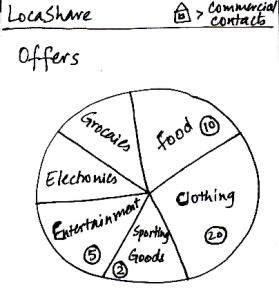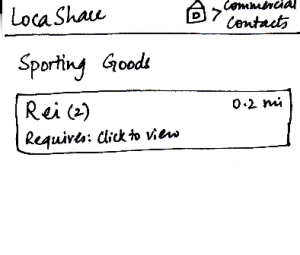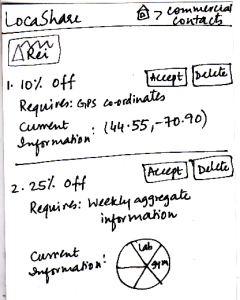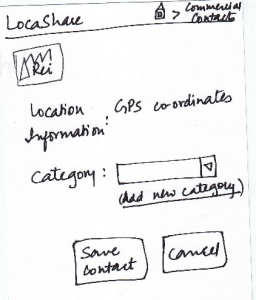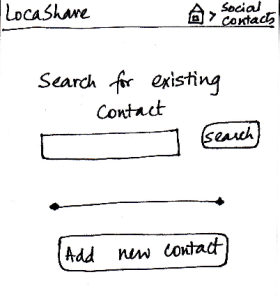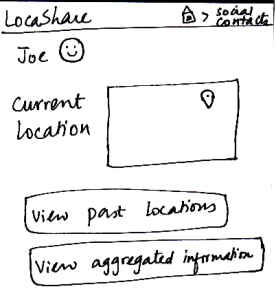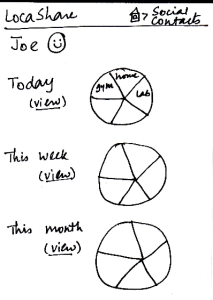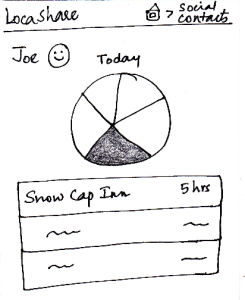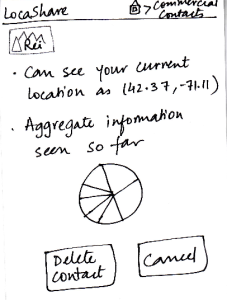...
Task 3: View offers and opt-in to create commercial contacts: | Storyboard | Learnability | Efficiency | Safety | Visibility | |
|---|---|---|---|---|---|---|
| Joe starts from the home screen and clicks | The numbers do not make sense as they are not labeled or defined on the screen. | Have to go through four screens to establish the commercial contact relationship. |
| If you over-share information, the only way to cancel that is by deleting the contact relationship. Not very efficient in that respect. | Options and controls are clearly visible. |
Task 4: View aggregate information of social contacts: | Storyboard | Learnability | Efficiency | Safety | Visibility | |||
|---|---|---|---|---|---|---|---|---|
| Since Alice wants to view Joe’s aggregate information, |
|
|
| The user would use the first two screens to view the current location as well, so this task is easy to understand. | Have to go through the same | No irreversible change can be done in this viewing task. | The graphs do not really convey interesting information. May be helpful to show the information on the fourth screen on hover (instead of clicking and going to another screen). |
Task 5: Edit social contacts: | Storyboard | Learnability | Efficiency | Safety | Visibility | ||
|---|---|---|---|---|---|---|---|
| Since Joe wants to modify the location permissions |
|
|
| May be helpful to have a "Cancel This Option" button beside the specific/aggregate information display. | No irreversible action possible in these two screens. | The data that the social contact can see is very visible and easy to understand. |
Task 6: Edit commercial contacts: | Storyboard | Learnability | Efficiency | Safety | Visibility |
|---|---|---|---|---|---|
| Since this task started with Joe seeing an offer from Rei, |
|
|
|
|
